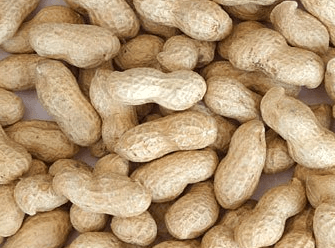ICRISAT introduces new groundnut varieties in northern Ghana
 Groundnut farmers in the Northern, Upper East and Upper West regions now have the opportunity to select from three newly improved varieties to boost production and improve income.
Groundnut farmers in the Northern, Upper East and Upper West regions now have the opportunity to select from three newly improved varieties to boost production and improve income.
The three new varieties, namely; Nketia SARI (100 days), Yenyawoso (90 days) and Sumnut 22 (100 days), were introduced to the farmers by the International Crop Research Institute for the Semi-Arid Tropics (ICRISAT).
The varieties have proven to be high yielding than the old Chinese variety the farmers have been using for years now.
Mr Sulemana Braimah, a 35-year-old farmer, who spoke to the media at a demonstration site during a Field Day, said the new varieties were appealing to the eye compared to the old Chinese variety.
He said he became convinced when one groundnut was uprooted from each of the varieties and the pods counted, adding that Nketia SARI had the highest yield of 38 pods, followed by Sumnut 22, which had 30 pods and Yenyawoso, 25 pods while the Chinese variety had nine pods.
Madam Alima Pagma, a 38-year-old farmer, noted that through the demonstration she had realised that it would be more beneficial to adopt those new varieties as they had more yield.
Mr Kwesi Wih, the Upper West Regional Plant Protection Officer of the Ministry of Food Agriculture (MoFA), said the ICRISAT project, dubbed; “Increasing groundnut productivity of smallholder farmers in Ghana,” is being funded by the United States Agency for International Development (USAID) through its Feed the Future Agriculture Technology Transfer (ATT) project.
He said the project goal was to increase groundnut production and productivity of smallholder farmers in Ghana, Mali and Nigeria, thereby improving their income, nutrition and health status.
Mr Wih, who is also the Focal Person for ICRISAT, said the project objectives were to enhance farmers’ knowledge on improved groundnut production technologies and complementary crop management practices.
It is also to enhance seed production and marketing and farmers’ knowledge on aflatoxin management as well as access to small scale processing technologies.
Mr. Wih noted that the project targets 170,000 direct beneficiaries and 250,000 indirect beneficiaries across the six districts; Sissala West, Sissala East, Jirapa, Wa East, Wa West and Wa Municipal.
Mr Emmanuel Sasu Yeboah, the Upper West Regional Director of Agriculture, said Gambia was the largest exporter of groundnuts and that Ghana could do better because of her wider land space.
He said land in northern Ghana was fertile for groundnuts production and commended ICRISAT and partners for promoting the new improved varieties.
Source: GNA
